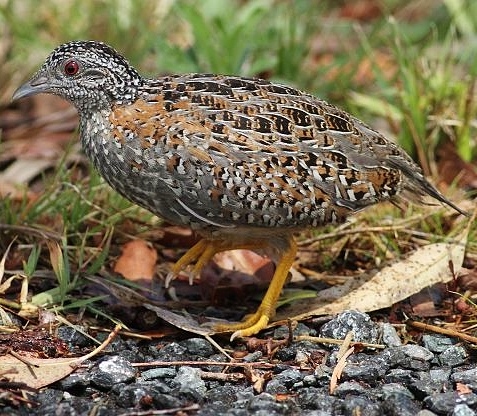 |
| Photo by Tom Tarrant (Encyclopedia of Life) |
Common name:
painted buttonquail (en); toirão-pintado (pt); turnix bariolé (fr); torillo pintojo (es); buntlaufhühnchen (de)
Taxonomy:
Order Gruiformes
Family Turnicidae
Range:
This species is endemic to Australia, being found in the eastern parts of the country, from northern Queensland to South Australia, in Tasmania, and in south-western Western Australia. There was also a subspecies in New Caledonia, which is extinct since the 1910s.
Size:
These birds are 19-20 cm long and weigh 60-130 g.
Habitat:
The painted buttonquail is found in dry areas, including scrublands, grasslands and savannas with plenty of scrub coverage. They are present from sea level up to an altitude of 1.500 m.
Diet:
They forage on the ground, taking seeds, grains, nuts and insects.
Breeding:
Painted buttonquails breed in September-March. They are polyandrous and the sex roles are reversed, with females displaying to attract males and defending the territory while the male is responsible for incubation and raising the young. They nest in a shallow depression on the ground, which is lined with dry grasses. The nest is usually placed under a grass tuft, scrub or fallen sapling. The female lays 3-5 white or light buff eggs with dark spots, which the male incubates for 13-15 days. The chicks leave the nest soon after hatching and follow the male around until fledging which takes place 16 days after hatching.
Conservation:
IUCN status – LC (Least Concern)
This species has a very large breeding range and is reported to be generally uncommon to locally common. The population is suspected to be in decline owing to ongoing habitat destruction, but it is not threatened at present.







